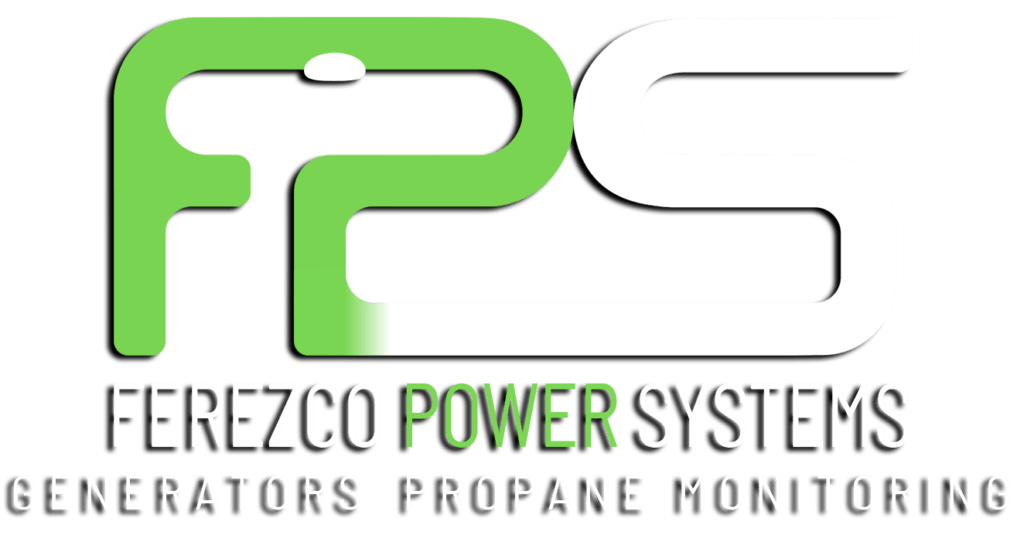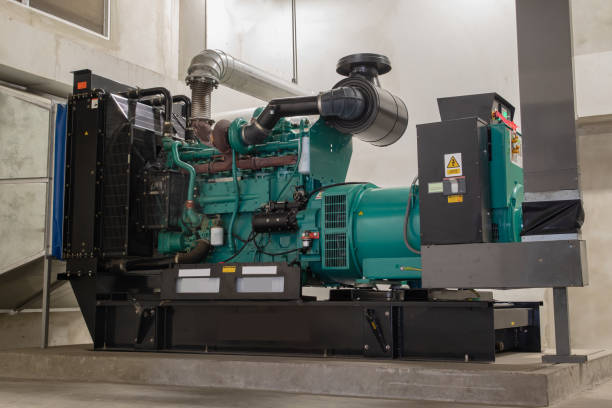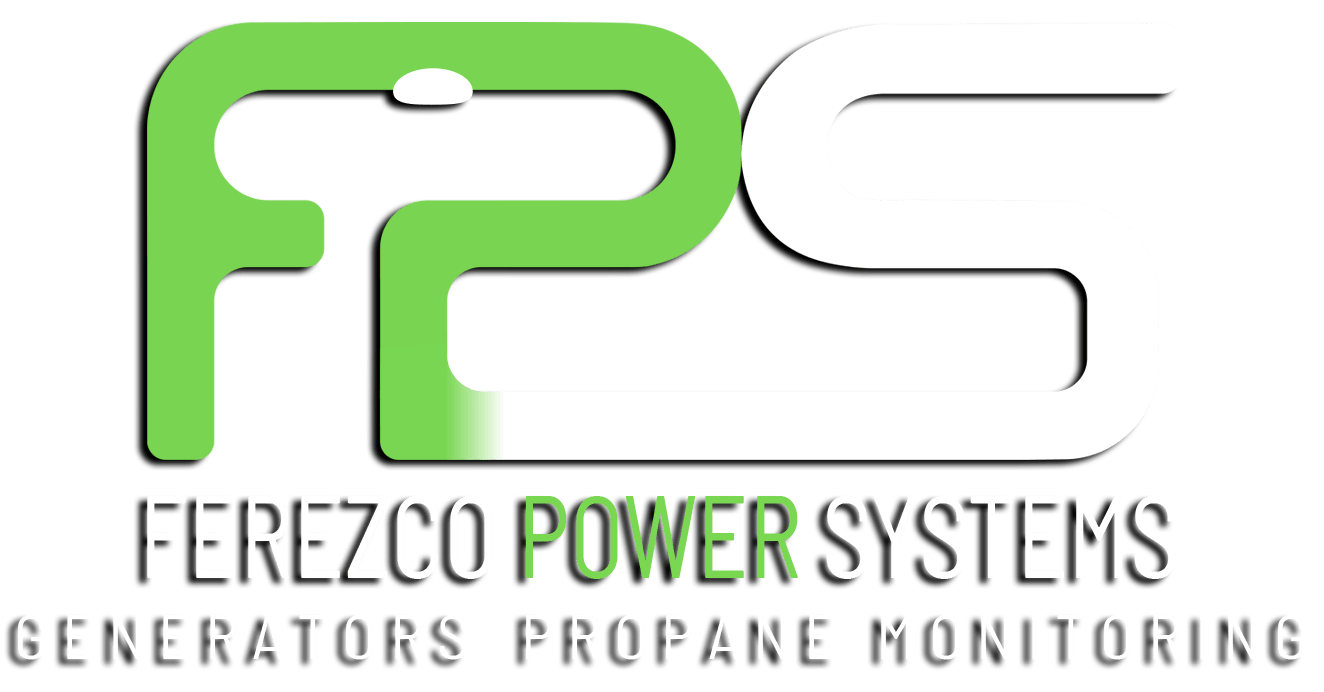Is your generator acting up again? When you rely on a generator to keep the lights on, any hiccup can be a big headache. From sudden failures to start to those annoying leaks, knowing what goes wrong can help you sort it out faster. At Ferezco Power Systems, we understand how essential a smooth-running generator is to your daily comfort and security. This blog will walk you through the 15 most common issues that might be troubling your generator, providing you with essential insights into what might be causing the fuss. Stay ahead of problems and keep your generator in tip-top shape with our expert advice.
1. Failure to Start
Sometimes, no matter how much you try, your generator just won’t start. This issue can be incredibly frustrating, especially during emergencies. The most frequent reasons include an empty fuel tank, a dead battery, or a faulty spark plug. It’s also wise to check whether the fuel valve is open and if there are any obstructions in the fuel lines. Routine checks and maintenance can prevent these problems, keeping your generator ready for action whenever you need it.
2. Fuel Leaks
Noticing a puddle of fuel under your generator is a clear sign of trouble. Fuel leaks are risky, they can cause fires. They happen due to worn out fuel hoses or poorly connected fuel lines. To nip this problem in the bud, regularly inspect the fuel system for any signs of wear or damage. Replacing old lines and ensuring all connections are tightened properly can help avoid leaks and the dangers associated with them.
3. Battery Failure
A generator without a working battery is like a car that won’t start, useless when you most need it. Battery issues often arise from neglect such as failing to charge the battery or leaving it inactive for long periods. Keep your battery in top shape by regularly charging it and cleaning any corrosion from terminals. This ensures that when the power goes out, your generator won’t let you down.
4. Overheating
Overheating can turn a reliable generator into a shutdown hazard. This problem might occur if the generator is running in a cramped space with poor ventilation or if it’s burdened beyond its capacity. Make sure your generator has enough room to breathe, and avoid pushing it too hard for too long. Also, check the coolant levels and the condition of the air filter, as these can contribute to overheating if not properly maintained.
Related: Electric Wires Simplified: Live Wire and Neutral Wire Explained
5. Control Panel Malfunctions
If your generator’s control panel stops working properly, it’s like flying blind – you won’t be able to monitor or control the functions effectively. These malfunctions often occur due to electrical failures, moisture exposure, or just general wear and tear. It’s crucial to keep the control panel dry and clean, and ensure that all connections are secure. Sometimes, resetting the system or checking for loose wires can solve the issue, but if the panel displays error codes or doesn’t light up, it might need professional attention. Regularly checking and servicing the control panel can help catch issues before they lead to a complete generator failure.
6. Voltage Fluctuations
Inconsistent voltage from your generator can be more than just an annoyance; it can actually harm appliances. Voltage fluctuations often result from issues like an overloaded generator, a failing alternator, or poor regulation. It’s important to balance the load and ensure that the generator is not running beyond its capacity. Regular checks on the alternator and voltage regulator can prevent these fluctuations. If your generator shows signs of unstable voltage output, reducing the load and consulting a technician can help safeguard your equipment.
7. Excessive Noise or Vibration
A generator that’s noisier than usual or vibrates excessively signals trouble. This could be due to loose parts, an imbalance in the generator’s components, or the unit being placed on an uneven surface. Regular maintenance should include checking for and tightening loose components, inspecting the engine mounts, and ensuring the generator is stationed on a stable base. Ignoring these signs can lead to more significant damage, so addressing them quickly is key to maintaining your generator’s longevity and efficiency.
8. Oil Leaks
Oil leaks in your generator are not just messy; they can also be indicative of potential damage to internal components. Common causes include worn seals or gaskets, overfilling the oil reservoir, or cracks in the oil container. It’s important to use the correct type and amount of oil and to replace worn seals as soon as leaks are noticed. Regularly cleaning around the engine and checking for oil during routine maintenance can help you spot leaks early, preventing further complications and ensuring your generator remains in good working condition.
9. Generator Runs Erratically (Surging or Stalling)
When your generator runs erratically, surging, or stalling unexpectedly, it can be a sign of several issues. Often, this behavior is due to problems with the fuel supply, whether it’s contaminated fuel or air bubbles in the fuel line. Another common cause is a dirty or malfunctioning carburetor that doesn’t regulate the fuel input properly. Additionally, a clogged air filter can restrict airflow, causing the engine to receive an improper air-to-fuel ratio. Regular maintenance, such as replacing filters, cleaning the carburetor, and ensuring fresh, clean fuel, can help maintain steady operation and prevent erratic behavior.
10. Low Power Output
Experiencing low power output from your generator is not only inconvenient but also a sign that something is not functioning correctly. This issue could stem from an overloaded generator trying to supply more power than its capacity allows. Alternatively, it might be due to worn or damaged components, such as a faulty alternator or issues within the electrical system itself. Ensuring your generator is not overburdened and conducting regular checks on the electrical components can help restore and maintain optimal power output.
Related: Don’t Get Shocked: 5 Electric Safety Tips You Need to Know
11. Automatic Transfer Switch Failures
The automatic transfer switch (ATS) is crucial for seamlessly switching the power supply from the main grid to the generator during a power outage. Failures in this component can lead to a lack of power when needed most. Common issues with ATS include faulty wiring, a bad connection, or a malfunctioning sensor. Regular testing and maintenance of the ATS can ensure it functions correctly during power failures, providing reliable backup power without interruption.
12. Wet Stacking
Wet stacking is a condition that occurs when unburned fuel accumulates in the exhaust system of a generator, often seen with diesel engines. This can happen when the generator operates below its capacity for prolonged periods, leading to incomplete combustion. Symptoms include a build-up of black, oily residue around the exhaust and reduced engine efficiency. Addressing wet stacking involves running the generator at full load for a certain period to burn off the excess fuel or consulting with a technician to adjust the load settings.
13. Exhaust Issues
Problems with your generator’s exhaust system can lead to inefficient operation and can even be hazardous. Common exhaust issues include blockages, leaks, or damage to the exhaust components. Blockages might be caused by debris or buildup of soot, which can restrict the flow of exhaust gases. Leaks, often found at connections or due to cracks in the exhaust components, can allow dangerous gases to escape into areas where the generator operates. Regular inspections can help identify and correct these problems early, ensuring safe and efficient operation.
14. Coolant Level and Quality Issues
Maintaining the right coolant level and quality in your generator is crucial for preventing overheating and ensuring optimal performance. Low coolant levels can occur due to leaks in the system, while poor coolant quality may result from contamination or degradation over time. It’s important to check the coolant regularly and top it off as needed. If the coolant appears dirty or contains debris, it should be flushed and replaced. This not only helps in maintaining engine temperature but also extends the life of your generator by preventing corrosion and other heat-related damages.
15. Sensor Failures
Sensors in your generator play a vital role in monitoring its status and ensuring efficient operation. When these sensors fail, they can lead to false readings or cause the generator to shut down prematurely. Common sensor-related issues include faulty oil pressure sensors, temperature sensors, and fuel level sensors. These failures can often be diagnosed through error codes displayed on the generator’s control panel. Regular testing and calibration of sensors are essential to ensure they provide accurate information and help in maintaining the reliability of your generator.
Related: Different Types of Generators and Their Applications
Why These Problems Occur
Generators are robust machines designed to provide a steady power supply when outages hit. However, they are not immune to issues. Understanding why these problems crop up can help you prevent them and maintain your generator in top condition, ensuring it’s ready when you need it the most.
- Lack of Regular Maintenance: The biggest culprit behind generator failures is neglecting routine maintenance. Generators are like cars; they need regular check-ups to run smoothly. Skipping oil changes, not cleaning air filters, and ignoring annual servicing checks are a surefire way to invite trouble. These maintenance activities are crucial for spotting and addressing minor issues before they escalate into major problems.
- Improper Usage: Every generator has its limits. Pushing it beyond its operating specifications, such as using it in overly harsh conditions or running it at full load for prolonged periods, can strain the system. Improper handling, like using the wrong fuel type or oil, can also lead to inefficiencies and damage. It’s vital to understand and adhere to the manufacturer’s guidelines for using and handling your generator.
- Environmental Factors: The environment where you keep and use your generator affects its health. Operating it in extremely dusty or wet conditions can lead to internal damage. High humidity can cause rust and corrosion on critical components. Similarly, extreme temperatures can stress the generator’s mechanical and electrical systems. Keeping your generator in a clean, dry, and temperate space can prevent many environmental issues.
- Wear and Tear Over Time: Generators wear down with use. Components like the carburetor, fuel lines, and electrical wiring degrade over time and with usage. This natural wear and tear can lead to issues such as leaks, failures in starting, or power output inconsistencies. Regularly replacing parts that are prone to wear and scheduling inspections can help in managing this deterioration.
- Fuel Quality and Management: Fuel issues are among the most common problems affecting generators. Using stale or contaminated fuel can cause the engine to perform poorly or even fail to start. Over time, unused fuel can degrade and leave behind residues that clog the fuel system. Ensuring you use fresh, high-quality fuel and properly storing it will keep the engine running efficiently.
- Battery Failures: Batteries in generators serve crucial starting functions. However, they can fail due to overcharging, undercharging, or simply aging. Battery issues are preventable with regular voltage checks and ensuring the charging system is functioning correctly. Replacing batteries before they reach the end of their life span is also advisable to avoid unexpected failures.
- Control System Malfunctions: Modern generators often rely on sophisticated control systems to operate efficiently. These systems can malfunction due to software glitches, sensor failures, or electrical issues, leading to generator shutdowns or failure to start. Keeping software updated, and sensors clean and intact can help minimize these problems.
How Ferezco Power Systems Can Help
At Ferezco Power Systems, we understand that reliable power supply is essential, especially in areas prone to outages. We specialize in comprehensive generator services designed to keep your systems up and running efficiently when you most need them. Our team, equipped with expert knowledge and advanced tools, can tackle a wide range of generator issues, ensuring minimal downtime and maximum efficiency.
Our services include:
- Preventive Maintenance: Regular checks and servicing to prevent major issues, thus extending your generator’s lifespan.
- On-Site Repairs: Efficient handling of all generator repair needs, whether they are minor adjustments or major overhauls.
- Load Bank Testing: Verification of operational performance and capacity to ensure your generator meets the load requirements during actual power outages.
- 24/7 Monitoring: Continuous monitoring services to detect and swiftly address issues as they arise, reducing the risk of unexpected failures.
- Customized Solutions: Tailored consulting services that optimize your setup, from system design to installation.
We proudly serve San Antonio and the surrounding cities in Texas, bringing reliable and prompt generator services right to your doorstep. Whether you’re facing an emergency repair or need routine maintenance, our local presence ensures fast response times and personalized service.
With Ferezco Power Systems, you gain a dedicated partner committed to ensuring your generator is always ready to perform. Our proactive approach helps mitigate risks, reduce repair costs, and maintain smooth operation, giving you peace of mind and uninterrupted service.
Frequently Asked Questions (FAQs)
- What causes a generator to fail to start?
- Common reasons include low fuel, a dead battery, or issues with the spark plug or fuel filter.
- How can I prevent my generator from overheating?
- Ensure proper ventilation, regularly check coolant levels, and avoid overloading the generator beyond its capacity.
- Why does my generator run erratically?
- Erratic running can be due to dirty or clogged fuel lines, issues with the carburetor, or inconsistent fuel quality. Regular maintenance and using clean fuel can help mitigate this issue.




